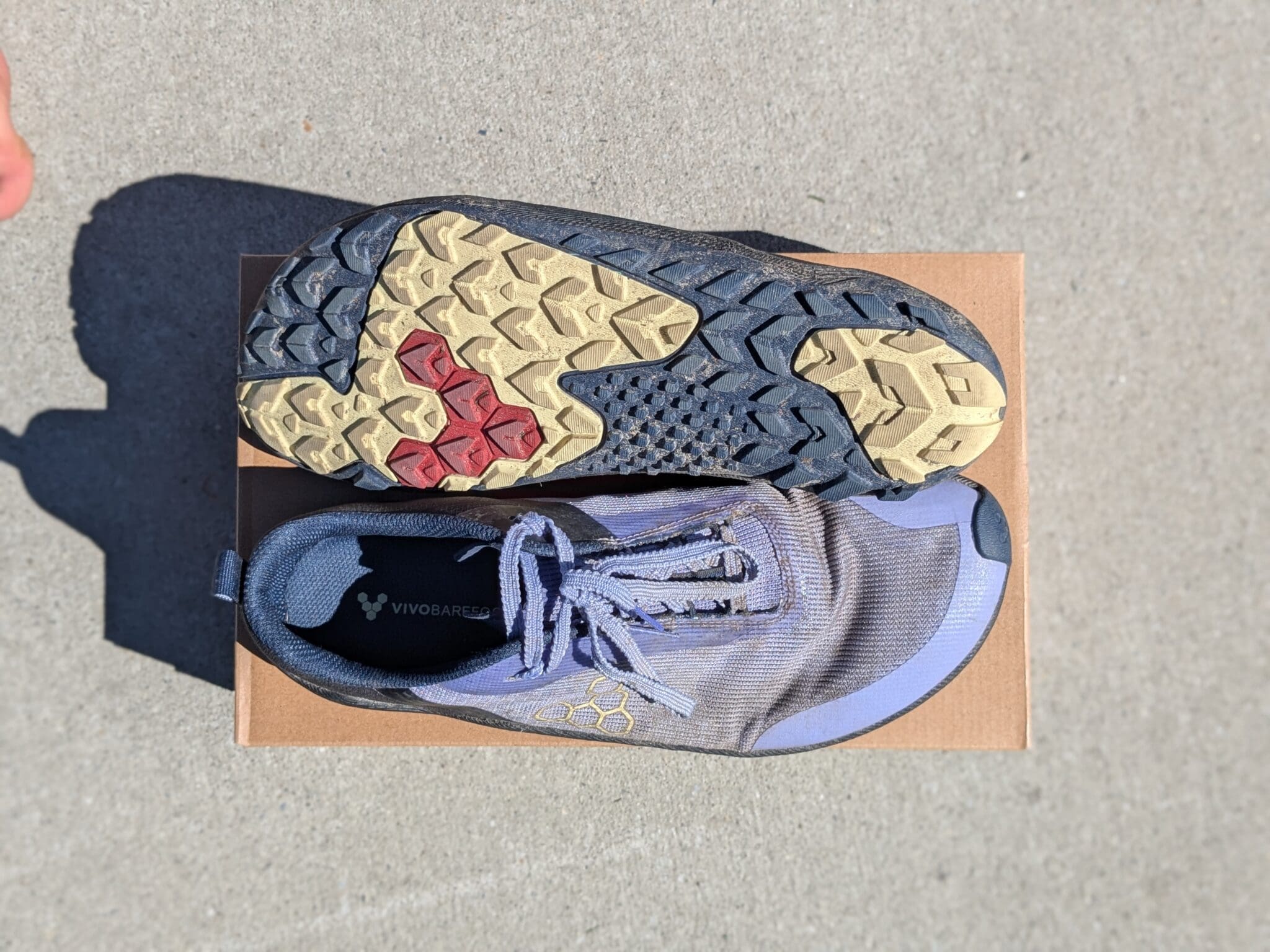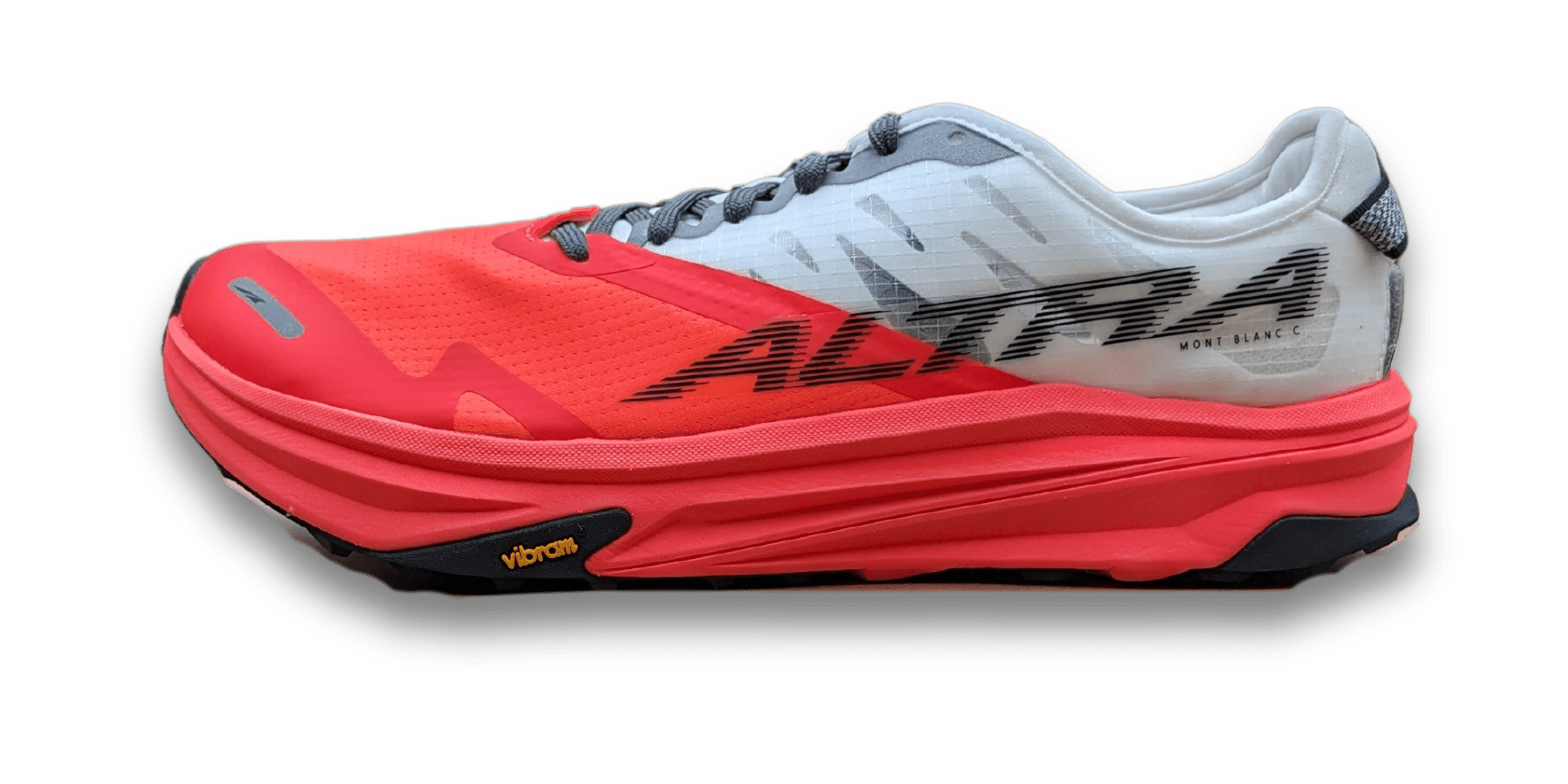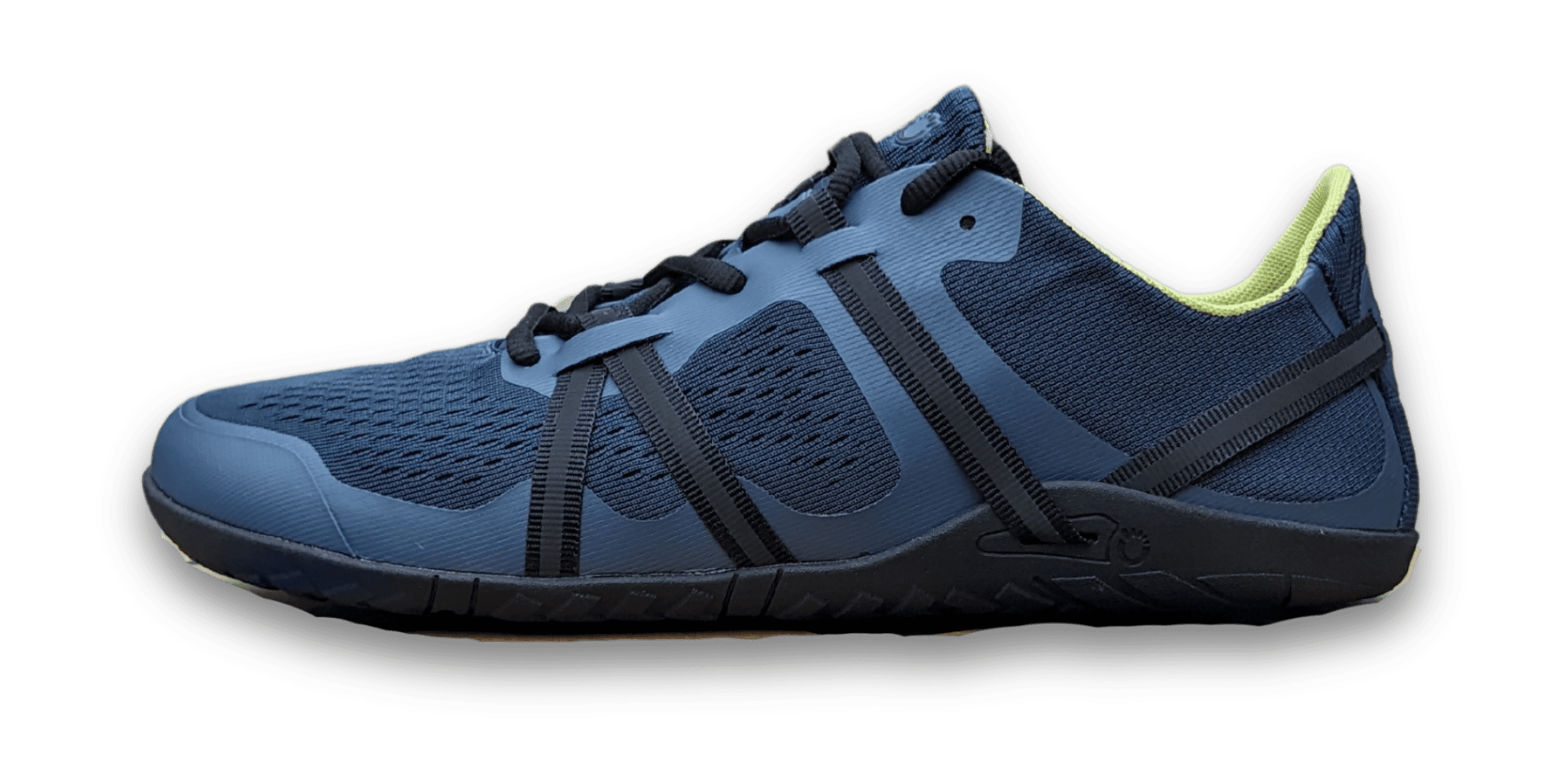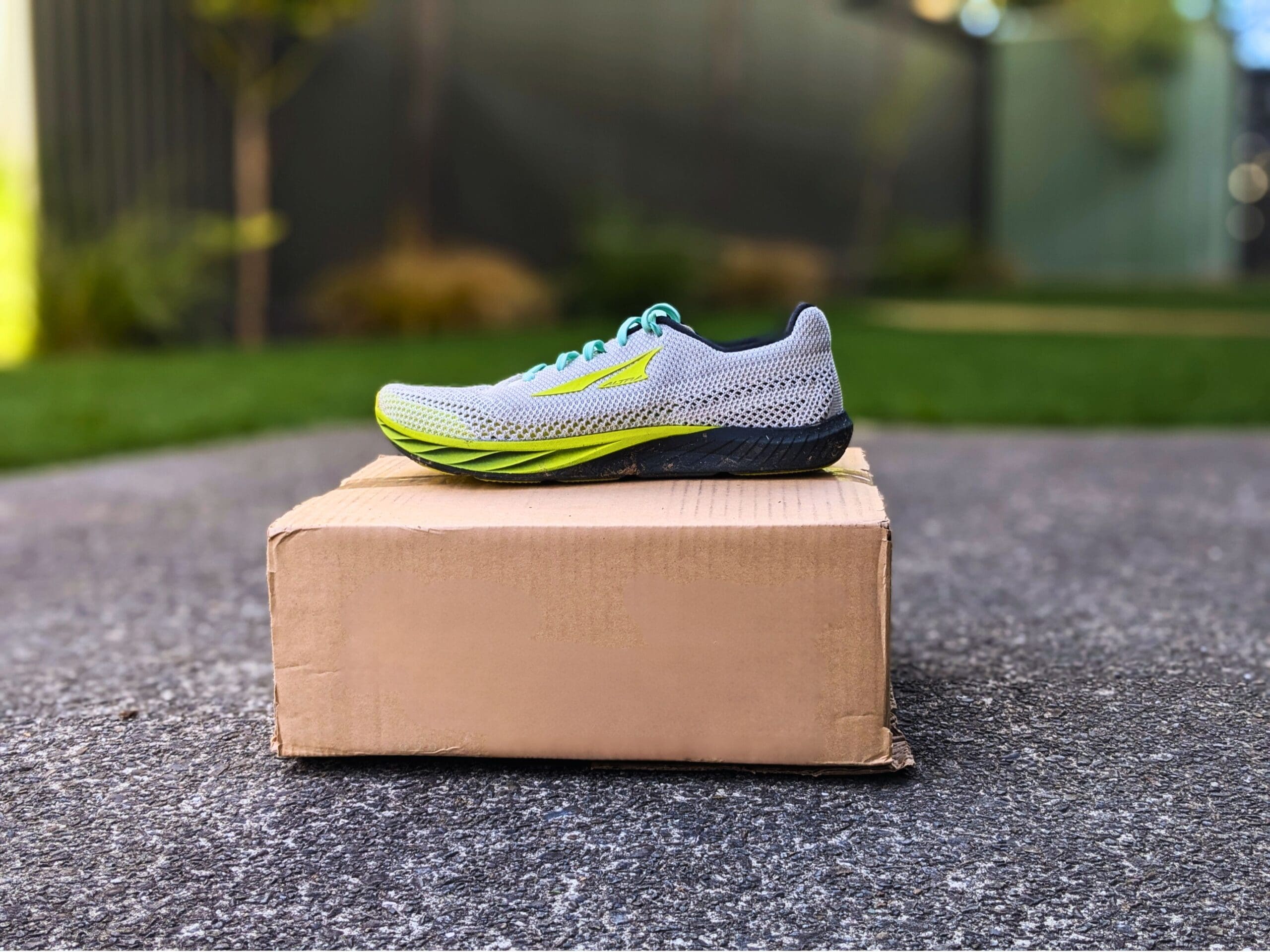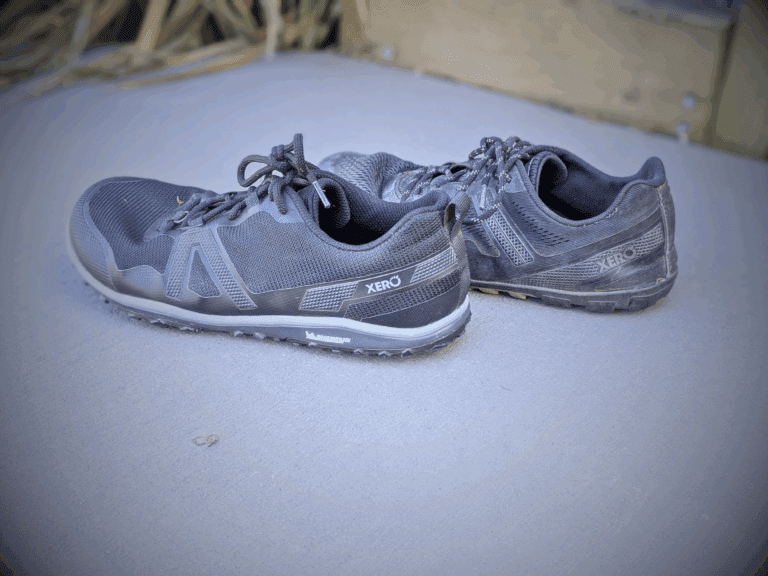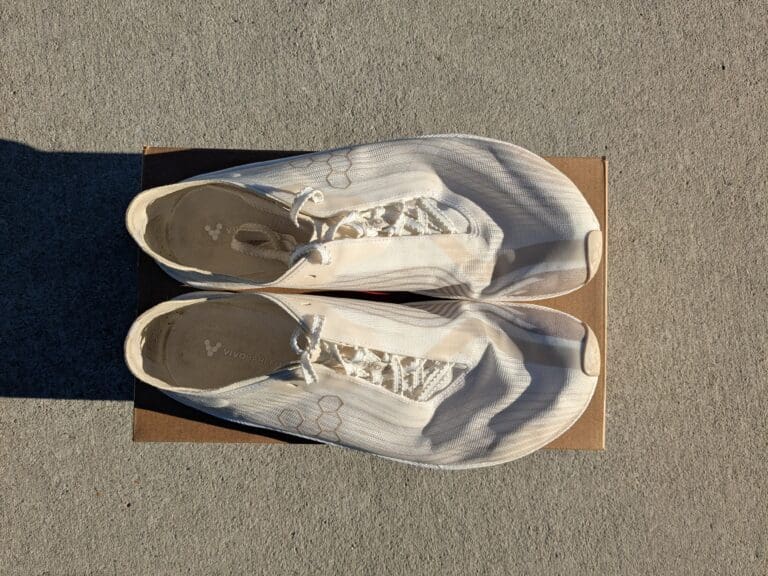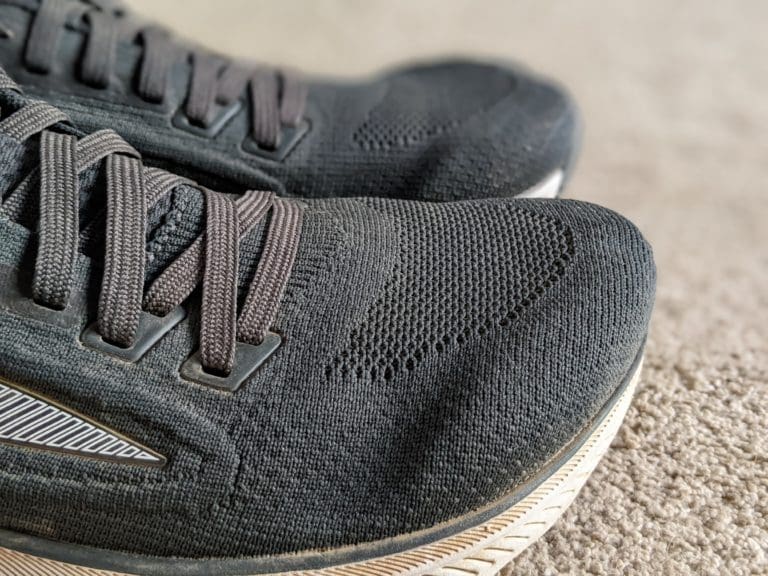Affiliate Disclosure: By clicking through the links on this page and purchasing the products, you’ll be helping me out. This is done because I receive a kickback from the sellers at no extra cost to you! Thank you so much for supporting us!
I’ve got three races lined up over the next few months, and if you looked at my race bag, you’d see three completely different pairs of shoes. A carbon-plated Altra trail beast, a hybrid minimalist road shoe, and a zero-drop barefoot trail runner. Each race has wildly different demands, and choosing the right shoe for each isn’t just about comfort—it’s about performance, injury prevention, and honestly, having fun out there.
Let me walk you through my thinking for each race and the shoes I’m choosing. Whether you’re planning your own race calendar or just curious about how to match shoes to different scenarios, this breakdown should give you a framework for making smarter footwear choices.
Here’s the big one: a 65-kilometer trail race with +2000 meters of vertical gain. This is the kind of race where shoe choice can make or break your day. I’m currently torn between the Altra Mont Blanc Carbon and the Bahe Revive Adapt, and the decision reveals something important about the tradeoffs we make in footwear.
Option A: Altra Mont Blanc Carbon — The Fast Choice
Altra Mont Blanc Carbon
Type: Trail
Width: Wide
Stack height: 29mm
Weight: 9.3oz / 264g
Carbon-plated trail beast built for speed on technical terrain. Read the full Review
The Mont Blanc Carbon is a legitimate race weapon. With 33mm of stack height under the heel and a carbon fiber plate, this shoe is built for speed. I’ve tested this shoe extensively, and it’s the fastest trail shoe I’ve ever worn. The Vibram Megagrip LiteBase outsole grips everything, and that carbon plate gives you serious propulsion on the flats.
But here’s the catch: this much cushion and this much structure comes at a cost to my body. After long runs in the Mont Blanc Carbon, I feel it in my joints. My knees get a bit achy. My hips feel compressed. It’s not pain exactly, but it’s fatigue that I don’t experience in more minimal shoes. The shoe is doing so much work that my body doesn’t have to, and over 65 kilometers, that disconnect adds up.
The fit is also interesting. **Altra’s foot-shaped toe box is ok in this mode. But the overall volume is snug through the midfoot, and I had to size up a half size to accommodate foot swelling on long runs.
The weight is 9.5 ounces (267g) in my size, which is remarkably light for this much shoe. For comparison, that’s just 1.5 ounces heavier than some minimalist trail shoes. The trade-off for that light weight is durability—the upper fabric is thin, and doesn’t lock the foot in well.
Here’s my concern for the ultra: 33mm of cushion creates a lot of distance between my foot and the ground. On technical trails with roots and rocks, I lose some proprioception. I can’t feel the trail surface as clearly, which means I have to rely more on visual cues and less on tactile feedback. For a 65km race where mental fatigue is a real factor, that extra cognitive load matters. Pair that with muscle breakdown, and I’m in for a rough ride.

Option B: Bahe Revive Adapt — The Hybrid Approach
Bahe Revive Adapt
Type: Trail
Width: Wide
Stack height: 14mm
Weight: 9.4oz / 267g
Hybrid grounding shoe with responsive foam and natural mechanics. Read the full Review
This is where the Bahe Revive Adapt becomes really interesting. It sits in this unique middle ground with 14mm of stack height and zero drop, offering significantly more ground feel than the Mont Blanc while still providing meaningful cushion for long distances.
The Revive Adapt uses Bahe’s firmer foam, which is genuinely different from anything else I’ve tested. It’s responsive without being bouncy, protective without being mushy. The foam density feels similar to what you’d find in a daily trainer, but the geometry of the midsole creates a ride that’s more stable and grounded than typical cushioned shoes.
What I love about this shoe for an ultra: the 14mm stack gives my feet enough protection to handle sustained pounding without the disconnected feeling of maximum cushion. I can still feel trail features clearly enough to adjust my foot placement instinctively, but I’m not getting beat up by every rock.
The fit is spot-on for my feet. Bahe’s foot-shaped last is just more forgiving all round when compared to the Altra’s, which allows for foot swelling and wiggle room for those toes.
At 9.7 ounces (275g) for my size, the Revive Adapt is roughly the same weight as the Mont Blanc. But the more flexible nature will mean my feet will be working much hard, which considering my foot conditioning, I’m happy with.
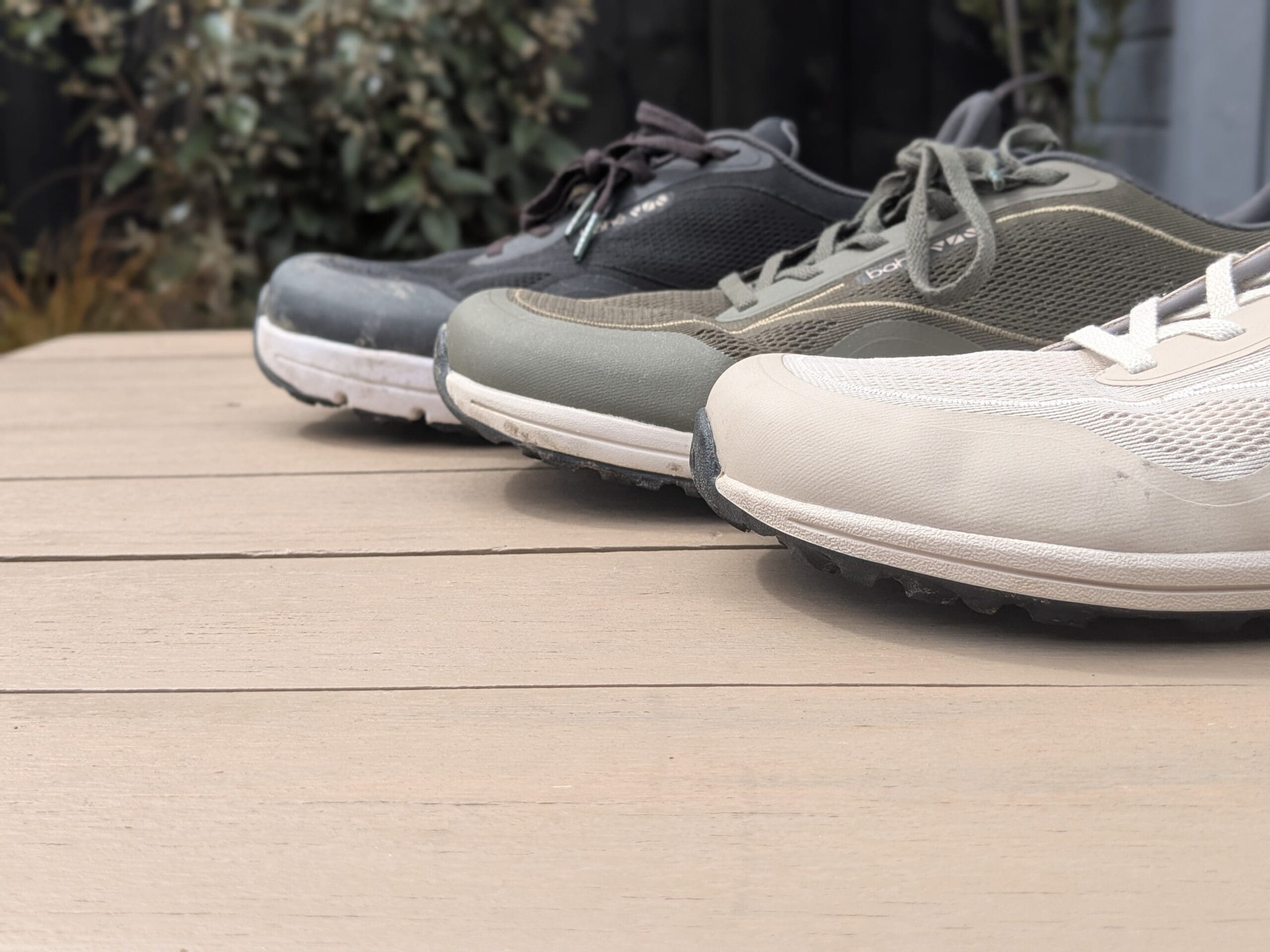
The outsole is the potential weak point. Bahe uses their own rubber compound with a lug pattern is shallower than what you’d find on dedicated trail shoes. In my testing, it grips well on hard-packed trails and moderate mud, but it’s not quite as confidence-inspiring as the Mont Blanc’s Megagrip on loose dirt or steep descents.
My Decision Process
Right now, I’m leaning toward the Bahe Revive Adapt for this ultra, and here’s why: For races over 50 kilometers, I’ve found that ground feel and natural foot mechanics become more important than maximum cushion. The fatigue I prevent by maintaining better biomechanics outweighs the comfort of more cushion.
But this decision is highly personal and depends on several factors:
The key insight: Neither shoe is “better”—they’re optimized for different priorities. The Mont Blanc prioritizes speed and protection at the cost of ground feel. The Revive Adapt prioritizes natural mechanics and efficiency at the cost of maximum cushion.
- Your transition stage: If you’re newer to minimal footwear, the Mont Blanc’s cushion might be essential for preventing injury on this distance
- Trail technicality: On extremely rocky terrain, more cushion can reduce mental fatigue from constant foot placement decisions
- Your running form: If you’re a heel-striker or have a heavier footfall, more cushion might be protective rather than problematic
- Race intensity: If I were racing this ultra competitively rather than completing it comfortably, the Mont Blanc’s speed might tip the balance
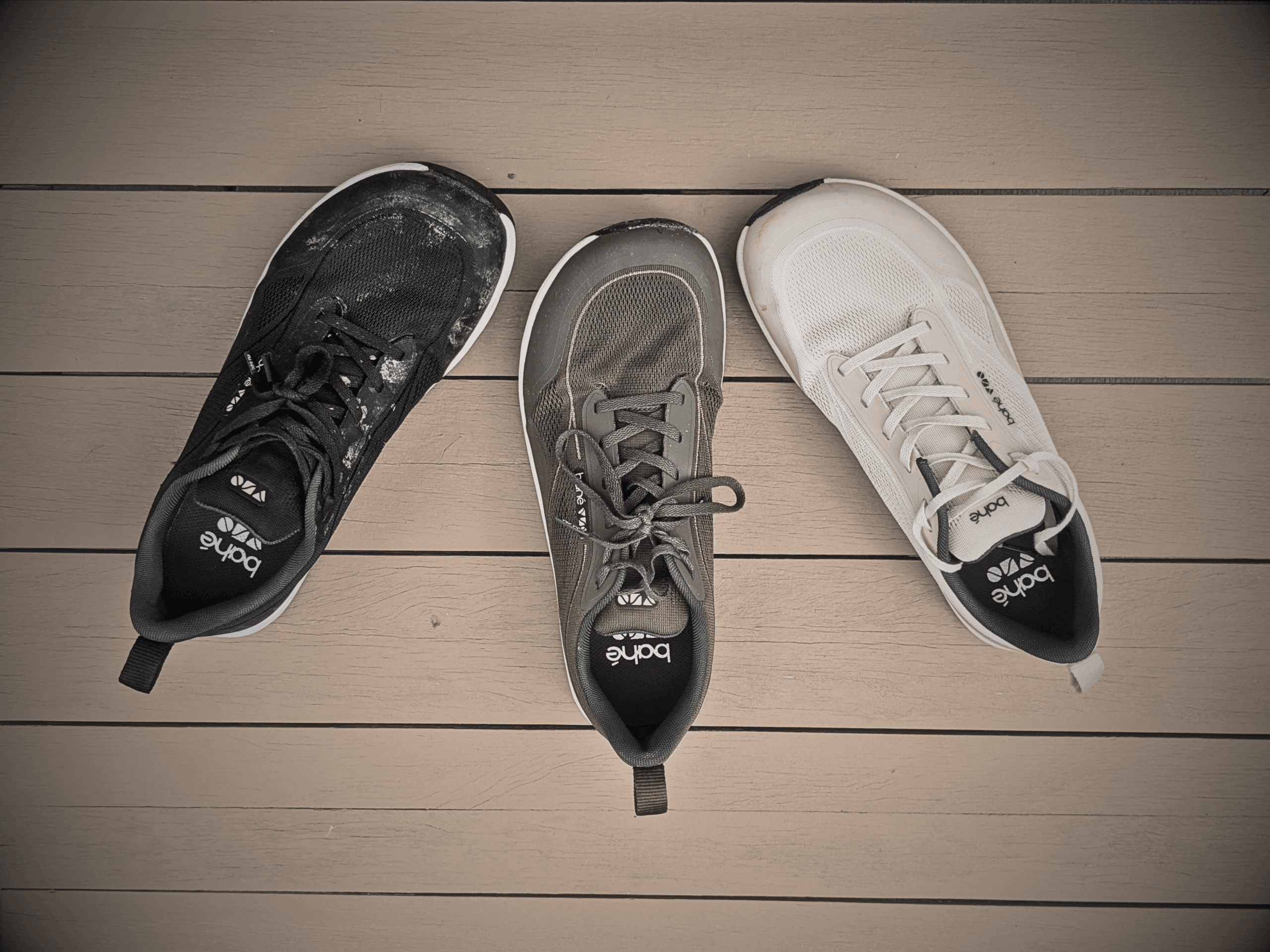
The second race is a Road VK—a vertical kilometer over 13 kilometers of pure uphill road running. This is the kind of race where you’re testing your feet, calves, and aerobic engine in equal measure. I’m currently deciding between the Xero Shoes Speed Force II and the Altra Escalante Racer 2, and the choice reveals something interesting about when minimal makes sense.
Option A: Xero Shoes Speed Force II — Maximum Ground Feel
Xero Shoes Speed Force II
Type: Road
Width: Standard
Stack height: 4.5mm
Weight: 6.5oz / 184g
Ultra-minimal barefoot runner with maximum ground feel. Read the full Review
For pure uphill road with minimal rocks, I want to rely on my feet and body to do the work. The Speed Force II is the closest to barefoot I’ve felt in a road shoe—super minimal at 4.5mm of stack with zero drop.
Here’s why this appeals for a vertical kilometer: When you’re climbing continuously for 13 kilometers, efficient mechanics matter more than cushion. The Speed Force II forces you to use your feet properly. Your calves, Achilles, and intrinsic foot muscles do the work they’re designed to do, and that engagement actually feels more efficient on sustained climbs.
The weight is incredibly light at around 6.5 ounces (184g) in my size. On a vertical race where you’re fighting gravity the entire time, every ounce matters. The calculation is simple: lighter shoes mean less energy spent lifting your feet thousands of times over 13km of climbing.
The outsole provides surprisingly good traction for a minimal shoe. This mildly lugged outsole isn’t a trail option, but on road and well-maintained fire roads, they grip adequately. I’ve tested these on steep road climbs, and the flexibility of the sole actually helps—you can feel the road surface and adjust your foot angle to maximize traction.
But here’s my concern: 4.5mm is very minimal, and on a 13km vertical effort, my calves are going to be screaming. Even with well-adapted feet, this much climbing in something this minimal might be asking too much. The question is whether the efficiency gains outweigh the muscular fatigue.
Option B: Altra Escalante Racer 2 — The Efficient Middle Ground
Altra Escalante Racer 2
Type: Road
Width: Wide
Stack height: 22mm
Weight: 7.76oz / 220g
Firm responsive cushion with minimal flexibility for speed. Read the full Review
The Escalante Racer 2 sits in an interesting space for minimal runners who want some cushion. With 21mm of stack height, zero drop, and a firm responsive foam, this shoe gives me cushion that doesn’t feel disconnected.
What I love about the Racer 2 for a VK: the firm foam gives direct feedback on climbs rather than squishing around. This isn’t the soft, sinky cushion of max-cushion shoes. It’s firm enough that you feel the ground but protective enough that your calves aren’t doing 100% of the shock absorption work.
The weight is 7.8 ounces (221g) in my size, which is about 1.3 ounces heavier than the Speed Force II. On a vertical race, that’s noticeable—but the trade-off might be worth it if the extra cushion prevents calf fatigue.
The fit is typical Altra: foot-shaped toe box with good splay room, though slightly snugger than some other Altra models. For racing, this more dialed-in fit is actually preferable—less shoe movement means better energy transfer on steep climbs.
Here’s what tips me toward the Escalante Racer 2: If the course flattens in sections, the firm cushion and flexibility give me an advantage. On pure vertical, the Speed Force II might edge ahead, but vertical kilometers often have sections where the gradient eases, and that’s where the Racer’s cushion helps me maintain pace.
The third race is a Trail VK—a vertical kilometer over just 7 kilometers, but on trail instead of road. This is where terrain conditions become the deciding factor. I’m choosing between the Vivobarefoot Primus Trail Flow and the Altra Superior 7, and the decision hinges entirely on what the trail conditions will be like.

Option A: Vivobarefoot Primus Trail Flow — Maximum Connection
Vivobarefoot Primus Trail Flow
Type: Trail
Width: Standard
Stack height: 8-10mm
Weight: 8.11oz / 230g
True minimal trail shoe with exceptional ground feel. Read the full Review
The Primus Trail Flow is stripped-down minimalism for trails. With 8-10mm of total stack height (including 3mm lugs) and zero drop, this shoe puts you about as close to the ground as possible while still having trail-specific traction.
For a short, steep trail VK, this minimal approach has real advantages: You can feel every rock, root, and trail feature, which allows for precise foot placement on technical climbs. When you’re going straight up for 7 kilometers, that proprioception helps you find efficient lines and adjust your stride to the terrain.
The weight is remarkably light at around 8 ounces (227g) in my size. On a race that’s all climbing, that lightness means less work for my legs on every single step. Over 7km of vertical, those grams add up.
The Primus Trail Flow uses 3mm lugs that provide adequate grip on most trail surfaces. The lug pattern is wide-spaced, which helps with mud shedding, and the rubber compound stays grippy on wet rock. For a VK where I’m mostly pushing up rather than bombing down, the traction is sufficient.
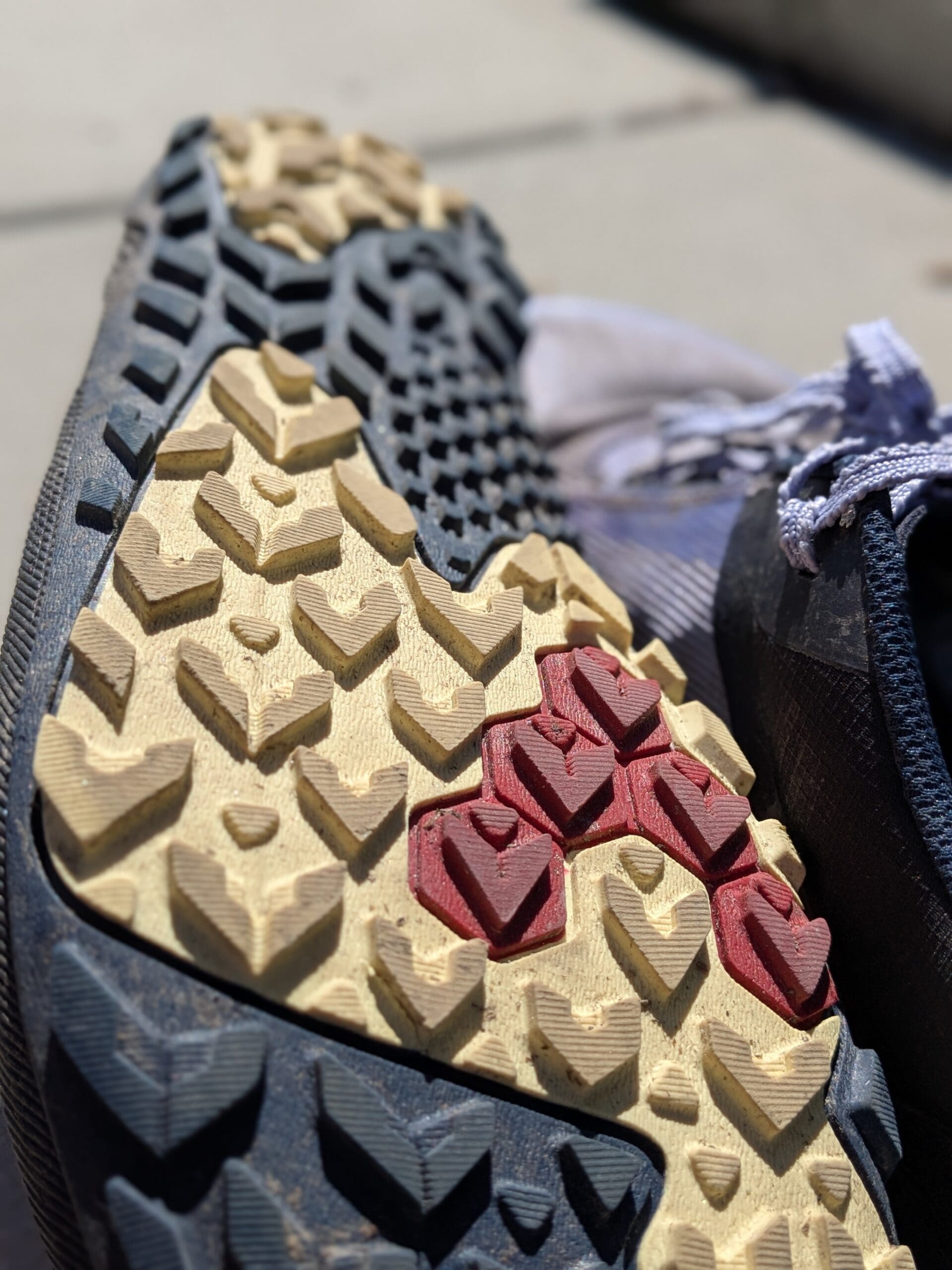
Here’s the catch: This shoe is perfect if it’s dry, but becomes risky if trail conditions are technical or loose. On sharp rocks or sustained rocky terrain, 8-10mm of total stack provides minimal protection compared to cushioned trail shoes. My feet would feel every pointy edge, and over 7km of climbing, that cumulative beating might slow me down more than the weight savings speed me up.
Option B: Altra Superior 7 — Minimal with Insurance
Altra Superior 7
Type: Trail
Width: Wide
Stack height: 21mm
Weight: 8.11oz / 230g
Minimal trail shoe with protective cushion and great ground feel. Read the full Review
The Superior 7 is Altra’s minimal trail option, and it occupies an interesting middle ground. With 21mm of stack height, zero drop, and a flexible platform, it’s still relatively minimal—but with significantly more protection than the Primus Trail Flow.
What makes the Superior 7 appealing for this race: the extra cushion provides insurance against unknown trail conditions. If the course is rockier than expected, or if there are sections of loose scree, that 21mm of cushion protects my feet without completely sacrificing ground feel.
The weight is 8.9 ounces (252g) in my size, which is less than an ounce heavier than the Primus Trail Flow. On a 7km race, that weight difference is minimal—we’re talking about maybe 5-10 seconds over the entire race.
The Superior 7 uses MaxTrac rubber with 4mm lugs, and the grip is “ok” on variable terrain. I’ve tested this shoe on everything from hard-packed trail to loose dirt to mud, and it handles it all well. For a VK where I can’t afford to slip or lose momentum, that reliable traction is valuable.
The fit is typical Altra: generous foot-shaped toe box with good midfoot security. For steep climbing where I’m pushing hard through my toes, having that extra room prevents pressure and potential blistering.
My Decision: Insurance Policy
Right now, I’m leaning toward the Superior 7, and it’s purely about risk management. The Primus Trail Flow is perfect for ideal conditions—dry, not too technical, predictable terrain. But trail conditions are unknown, and on a short race where I want to push hard, I don’t want to be held back by foot fatigue from sharp rocks.
The Superior 7 is my insurance policy. The slight weight penalty is worth the protection and durability for the descent. After grinding up 1000m of vertical, I still need to get down, and that’s where the Superior’s cushion and grip really shine.
If I knew for certain the trail would be smooth and dry, I’d go with the Primus Trail Flow for maximum ground feel and lighter weight. But given the uncertainty, the Superior 7 gives me the confidence to push hard regardless of what the trail throws at me.
What these three races illustrate is that there’s no single “best” shoe—only shoes that match specific demands better or worse.
For the 65km trail ultra, I’m choosing between maximum cushion for speed (Mont Blanc Carbon) and moderate cushion for natural mechanics (Bahe Revive Adapt). The right choice depends on trail technicality, my current fitness, and whether I’m racing for time or completion.
For the Road VK, I’m deciding between ultra-minimal for maximum efficiency (Xero Speed Force II) and firm cushion for sustained effort (Altra Escalante Racer 2). A 13km vertical climb on road rewards light weight and efficient mechanics, but also needs enough protection to prevent calf burnout.
For the Trail VK, I’m choosing between maximum ground feel (Vivobarefoot Primus Trail Flow) and protective minimal (Altra Superior 7). The shorter distance makes minimal practical, but unknown trail conditions make some cushion a smart insurance policy.
Key Questions to Ask When Choosing Race Shoes
Here are the questions I work through for any race:
1. What’s the total distance and vertical gain?
2. What’s the terrain?
3. What’s the race intensity?
4. What are the environmental conditions?
5. Where are you in your minimal transition?
- Longer distances → more cushion might prevent late-race fatigue
- More vertical → prioritize grip and stability over light weight
- Technical rocky trails → more cushion reduces mental fatigue from foot placement
- Smooth trails → minimal shoes work great with less risk
- Road → the even surface makes minimal shoes very practical
- All-out race effort → choose shoes that maximize speed even if they’re not your daily trainers
- Completion focused → prioritize comfort and injury prevention
- Muddy/wet → drainage and grip become critical
- Hot → breathability and light weight matter more
- Cold → some cushion can help insulate from frozen ground
- Early stages → more cushion provides protection while your feet adapt
- Well-adapted → minimal shoes often feel faster and more efficient
The Bottom Line
Every race is different, and being strategic about your footwear is part of performing your best. I’m not suggesting you need multiple pairs of shoes for different races—but I am suggesting you think critically about what each race demands and whether your default training shoes are actually optimal.
For the 65km trail ultra, I’m leaning toward the Bahe Revive Adapt because natural foot mechanics matter more to me over that distance than maximum cushion. For the Road VK, the Altra Escalante Racer 2’s firm cushion gives me insurance against calf fatigue while staying efficient. And for the Trail VK, the Altra Superior 7 provides the protection I need for unknown trail conditions while staying relatively minimal.
These are my choices based on my feet, my training, and my priorities. Your choices might be completely different—and that’s the point. The process of thinking through race demands and matching them to footwear characteristics is what matters.
Now if you’ll excuse me, I have three very different vertical training sessions to prepare for.
